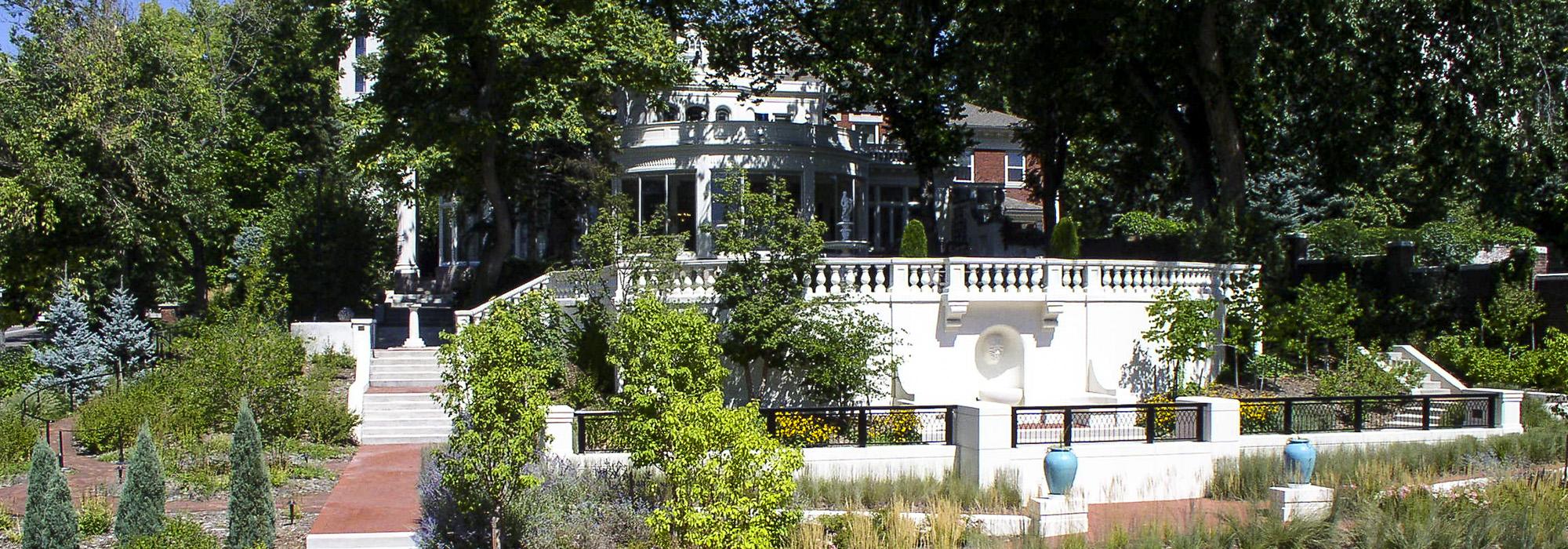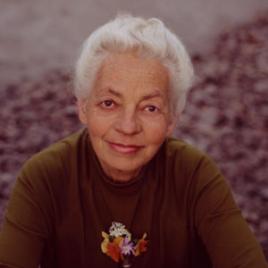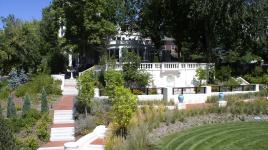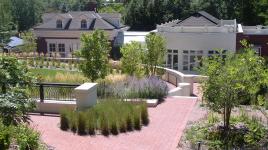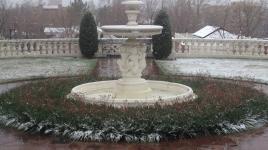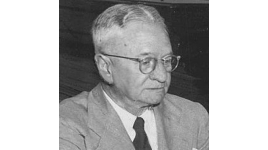Pioneer Information
Born in Denver, Ries graduated from the Lowthorpe School of Landscape Architecture in 1932. She completed further studies at Colorado and Denver Universities, and the Rhode Island School of Design. In 1933 she began working for landscape architect Irvin J. McCrary. Just two years later, she opened her own office in Denver. Taking a break from practice during World War II, she served in the U.S. Coast Guard, working briefly for Skidmore, Owings & Merrill in New York City at war’s end. She returned to her own firm in 1947, which she operated until 1989, when she joined Land Mark Design as a senior advisor.
Ries specialized in urban residential designs for both small and large homes. Her projects, which numbered over a thousand, showcased her signature style, formal but livable, welcoming from the street, and easy to maintain, integrating native and specimen plantings. Her designs include: an Art Moderne house for a General Electric Demonstration project; and in Denver, the Herb and Scripture Gardens for the Denver Botanic Gardens; rehabilitated gardens of the Colorado Governor's Mansion; the restored gardens at the Molly Brown House; and the urban renewal redevelopment of Larimer Square. Her own garden was designated a Denver Landmark in 1992. In addition to her residential work her commissions included federal housing projects, civic, academic and religious buildings.
Active in social causes, civic debate, and a mentor to many, Ries left her mark on the Denver community. She helped lead the way to promoting sustainable design in the region. She was inducted into the Colorado Women’s Hall of Fame; received the American Institute of Architects Denver Chapter’s Community Service Award, and the ASLA Medal in 2005. She was the third licensed landscape architect in the State of Colorado, elected a Fellow of the American Society of Landscape Architects in 1965 and was the first president of its Rocky Mountain Chapter which established the JSR Foundation in her honor.



